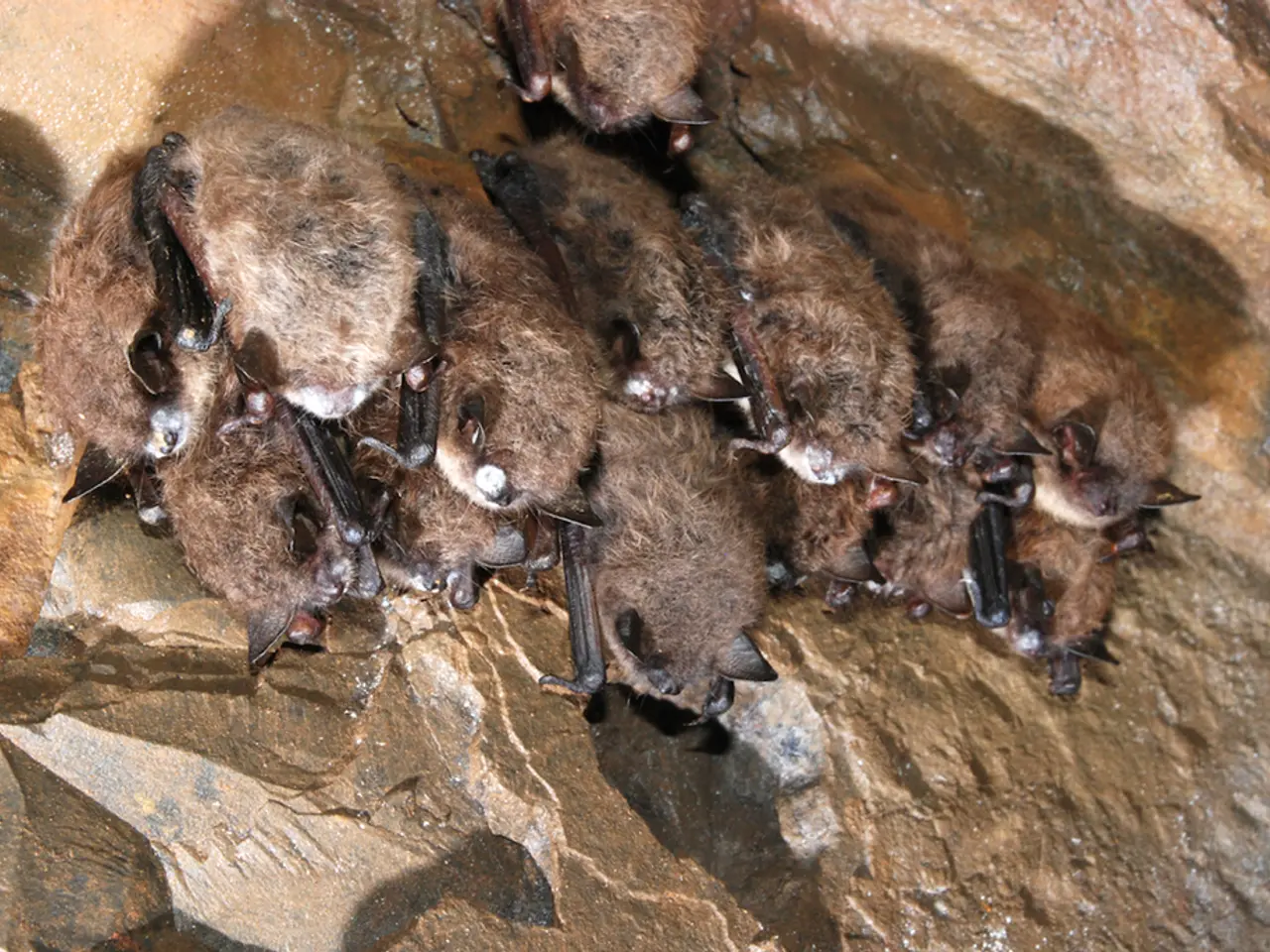Fascinating Information Unveiled: 9 Stunning Discoveries About Albino Bats You'll Adore
In the world of nocturnal creatures, the striking appearance of albino bats has long captivated our imaginations. These ethereal creatures, with their white fur and pink eyes, are a fascinating subject of scientific inquiry.
Recent discoveries, such as the Ghostly White Bent-Wing Bat found in Laos in 2021, have shed new light on these unique animals. Conservation efforts are now underway to protect these colonies and study their survival rates in the wild.
The cause of albinism in bats can be traced back to genetic mutations in the TYR gene, which encodes the enzyme tyrosinase essential for melanin production. These mutations disrupt melanin synthesis, leading to the albino bats' striking white appearance and pink or red eyes.
However, this condition comes with its challenges. Vision impairment, skin sensitivity, and neurological issues are common among albino bats, affecting their daily survival. For instance, reduced visual acuity and depth perception can make it difficult for them to navigate their environment, while their pale, unpigmented skin burns easily under sunlight and tears more readily during flight.
In response, conservation groups are working with local communities to protect known colonies and create enriched environments in captive care facilities. These sanctuaries and zoos aim to provide the best possible care for these vulnerable creatures.
Despite the challenges they face, some albino bats, like the Albino Striped Spear-Nosed Bat discovered in 2015, have managed to maintain normal flight patterns and echolocation abilities, despite their genetic mutation affecting their pigmentation.
The immunodeficiency associated with albinism leads to frequent respiratory infections, skin conditions, and bacterial overgrowth. To combat these issues, researchers are developing targeted treatments and care strategies to help these ghostly white flying mammals thrive.
As we look to the future, scientists plan to launch major exploration efforts in 2025 to find more albino bat populations in remote regions using DNA sequencing technology, thermal cameras, and acoustic monitoring devices. This research will provide valuable insights into the genetic and ecological factors affecting these fascinating creatures.
In conclusion, albinism in bats presents a complex set of challenges, but with continued research and conservation efforts, we can better understand and protect these enigmatic creatures. Their story serves as a reminder of the importance of preserving biodiversity and the unique roles each species plays in our ecosystem.





